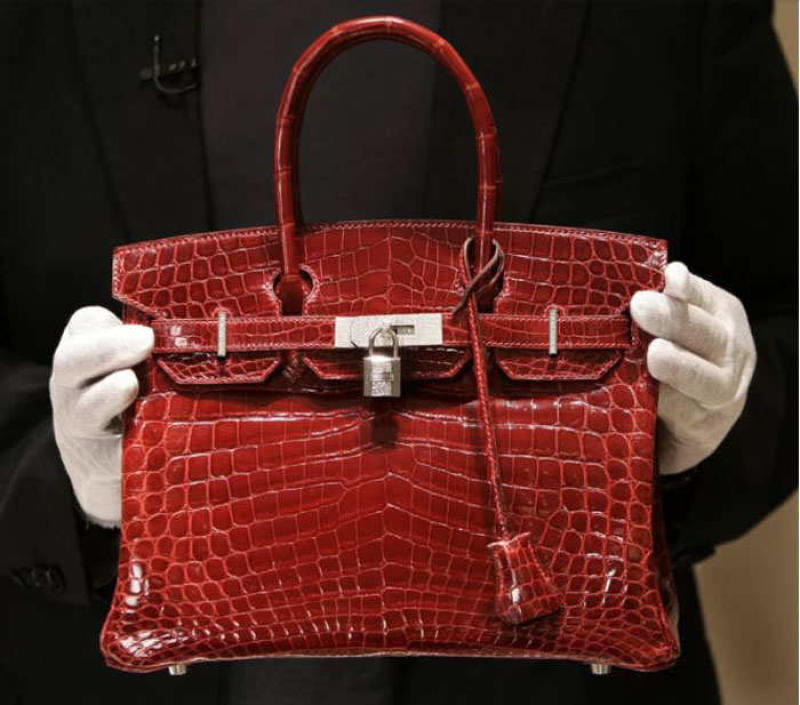
The Birkin bag has become the ultimate global status symbol when it comes to handbags. The bag first hit shelves in 1984 following an unexpected run-in between an actress and the CEO of a luxury goods manufacturer.
Fashion lore has it that Jane Birkin, a British actress and singer, was upgraded on a flight to London back in 1981 and found herself sitting next to Jean-Louis Dumas, the Hermès CEO. When everything fell out of the bag she had with her, he politely noted that she needed a bag with pockets. In a past interview, Jane recalls how she and Jean-Louis used an airplane sick bag to draft the ideal bag (for the use of her name, Jane receives a form of royalty to donate to a charity of her choice).
The Hermès’ Birkin bag began to really take off in the 90s. It’s handcrafted and has a starting price of between $8,500 (Sh868,000) and $12,000 (Sh1.2 million). And there’s a six-year waiting list.
There are thought to be only about 200,000 Birkins in circulation, so the best way to get one is on the second-hand market through auctions or at high-end pawn shops.
The most expensive Birkin to be sold at an auction was a white Himalaya Birkin bag made from crocodile skin and more than 240 diamonds. Auction house Christie’s sold the bag in 2017 for $379,261 (Sh38.7 million). Allow that to sink in for a minute – a handbag worth the value of an entire undergraduate education at a private Kenyan university for at least 30 students. The Himalaya Birkins are the world’s most expensive, rarest and most desirable handbags.
Annual return
Before the white Himalaya sale, back in 2015, a single pink crocodile-skin version of the Birkin fetched $223,000 (Sh22.8 million). And even further back in 2011, a red Porosus crocodile Birkin adorned with 18-carat white gold and diamonds went under the hammer and sold for $203,150 (Sh21 million).
According to a study done by Baghunter, an online marketplace for buying and selling handbags, the Birkin bag has outpaced both the S&P 500 – an American stock market index based on the market capitalisations of 500 listed large companies – and the price of gold over the last 35 years. The average annual return on a Birkin over this period is 14.2 per cent, compared to the S&P average of 8.7 per cent and gold’s -1.5 per cent.
So what makes the Hermès bag so valuable? Well, first, the bags have never dipped in price since they first hit shelves more than three decades ago, and their exclusivity hasn’t hurt. The bags’ scarcity has led to a booming resale market, with Fortune reporting that you can get them repaired for life, which means you can pass them down to your children and turn it into heirlooms.
The biggest buyers of Birkins are in Asia, which accounts for 46 per cent of sales. Coming in second are American consumers at 30 per cent, followed by Europe, the Middle East and Africa, where buyers account for 24 per cent of sales.
 The Standard Group Plc is a
multi-media organization with investments in media platforms spanning newspaper
print operations, television, radio broadcasting, digital and online services. The
Standard Group is recognized as a leading multi-media house in Kenya with a key
influence in matters of national and international interest.
The Standard Group Plc is a
multi-media organization with investments in media platforms spanning newspaper
print operations, television, radio broadcasting, digital and online services. The
Standard Group is recognized as a leading multi-media house in Kenya with a key
influence in matters of national and international interest.
 The Standard Group Plc is a
multi-media organization with investments in media platforms spanning newspaper
print operations, television, radio broadcasting, digital and online services. The
Standard Group is recognized as a leading multi-media house in Kenya with a key
influence in matters of national and international interest.
The Standard Group Plc is a
multi-media organization with investments in media platforms spanning newspaper
print operations, television, radio broadcasting, digital and online services. The
Standard Group is recognized as a leading multi-media house in Kenya with a key
influence in matters of national and international interest.





